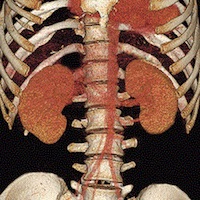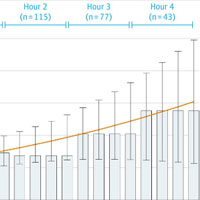Tag: mortality

Acute Salicylate Toxicity, Mechanical Ventilation, and Hemodialysis
In patients requiring intubation from acute salicylate toxicity, hemodialysis should be considered as part of management, as this is associated with decreased mortality. Salicylates are common substances that can be purchased... read more

Dying as a Pathway to Death in Sepsis
Mortality from sepsis remains high, with at least 270,000 deaths annually in the United States and more than 5 million deaths worldwide. Despite increasing understanding of the pathophysiology of sepsis, outside of targeted... read more

Natriuretic Peptides: A Role in Early Septic Acute Kidney Injury?
Acute kidney injury (AKI) is a common complication of critical illness and is associated with significant morbidity, mortality, and financial cost. Sepsis is the leading association of acute kidney injury in the intensive... read more

Functional Recovery in Critically Ill Children, the “WeeCover” Multicenter Study
This study provides new information regarding functional outcomes and the factors that influence meaningful aspects of functioning in critically ill children. Identifying patients at greatest risk and modifiable targets for... read more

Duration of hypotension before initiation of effective antimicrobial therapy is the critical determinant of survival in human septic shock
Effective antimicrobial administration within the first hour of documented hypotension was associated with increased survival to hospital discharge in adult patients with septic shock. Despite a progressive increase in mortality... read more

Delirium, Frailty, and Mortality: Interactions in a Prospective Study of Hospitalized Older People
Although delirium and frailty contribute to mortality, the overall impact of delirium on admission appears to be greater at lower levels of frailty. In contrast to the hypothesis that there is a bimodal distribution for mortality,... read more

Association of Inferior Vena Cava Filter Placement for Venous Thromboembolic Disease and a Contraindication to Anticoagulation With 30-Day Mortality
After adjustment for immortal time bias, Inferior Vena Cava (IVC) filter placement was associated with increased 30-day mortality in patients with venous thromboembolic disease (VTE) and a contraindication to anticoagulation.... read more

Out-of-hours Discharge from ICU, In-hospital Mortality and ICU Readmission Rates
Out-of-hours discharge from an ICU is strongly associated with both in-hospital death and ICU readmission. These effects persisted across all definitions of “out of hours” and across healthcare systems in different geographical... read more

Oxygenate, Ventilate, Do No Harm
Emergency physicians (EPs) are experts in emergent airway management and thus must be confident managing mechanical ventilation. Hospital-wide bed shortages mean that EPs will be managing admitted patients for longer periods... read more

Difficult-to-Treat Resistance in Gram-negative Bacteremia at 173 US Hospitals: Retrospective Cohort Analysis of Prevalence, Predictors, and Outcome of Resistance to All First-line Agents
Nonsusceptibility to first-line antibiotics is associated with decreased survival in GNBSIs. DTR is a simple bedside prognostic measure of treatment-limiting coresistance. The Premier Database was analyzed for inpatients... read more

Prehospital Plasma during Air Medical Transport in Trauma Patients at Risk for Hemorrhagic Shock
In injured patients at risk for hemorrhagic shock, the prehospital administration of thawed plasma was safe and resulted in lower 30-day mortality and a lower median prothrombin-time ratio than standard-care resuscitation.... read more

Prolonged Glucocorticoid Treatment is Associated with Improved ARDS Outcomes
Prolonged methylprednisolone treatment accelerates the resolution of ARDS, improving a broad spectrum of interrelated clinical outcomes and decreasing hospital mortality and healthcare utilization. We conducted two sets of... read more

Sepsis is a Preventable Public Health Problem
There is a paradigm shift happening for sepsis. Sepsis is no longer solely conceptualized as problem of individual patients treated in emergency departments and intensive care units but also as one that is addressed as public... read more

Association Between the New York Sepsis Care Mandate and In-Hospital Mortality for Pediatric Sepsis
In New York State following a mandate for sepsis care, completion of a sepsis bundle within 1 hour compared with not completing the 1-hour sepsis bundle within 1 hour was associated with lower risk-adjusted in-hospital mortality... read more








